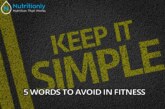By eating more fat and much fewer carbs, your body will transition into utilizing fat for energy (both dietary and stored). This transition takes some time and it will vary among different individuals.
The underlying premise to eating a ketogenic diet is to help your body burn more body fat. This will not happen if you are still eating in a caloric surplus. Although, eating in a caloric surplus will be more difficult on a ketogenic diet, as compared to other diets. This satiety affect has much to do with the success people experience while eating a ketogenic diet.
The recommended protein intake is lower than I have recommended in the past (“How much Protein do I need?“) and what I typically like to recommend. The ketogenic diet aims for the minimal protein intake necessary so that every gram is utilized for muscle repair and normal body functions.
By foregoing carbohydrates, you are forcing your body to adapt to utilize fat as energy. It is more difficult to do and your body doesn’t prefer to do it, but it can do it. This is a basic survival mechanism that our ancestors used many years ago to survive harsh conditions with little food.
No carbs? So, what do I eat?
First, let me say this: many people fail when implementing a ketogenic diet because they neglect vegetables. They think that they can eat endless amounts of bacon, butter, and meat and acquire the physique of their dreams. That’s just not the case. Green, leafy, cruciferous vegetables are a critical component.
In my opinion, it’s quite easy to over-do the butter consumption. I’m not a huge fan of bacon either, from a nutritional perspective. Pigs don’t limit themselves to a specific diet. Often times, you can find them eating trash, literally. That doesn’t bode well for nutritious meat.
The meats you consume must be of the highest quality: grass-fed beef, wild-caught fish, organic, cage-free, free-range (outside) chickens, etc. You will be getting a lot of calories from fat. You need to ensure that you are getting quality sources.
To help increase your fat calories, you may need to consider oils. Macadamia nut oil, coconut oil, and olive oil are great choices. Trust me, it will be difficult to consume the amount of fat recommended at first. These oils can help out tremendously.
This article is far from an extensive over-view of the ketogenic diet. Rather, it’s just to make you more aware of what it actually is. Personally, I like the diet in specific contexts. I have put clients on it, in the past. However, I always know that clients will not be on this diet forever. Therefore, I always have an exit strategy.
If you are interested in setting up a ketogenic diet, we would be more than happy to do that for you. At Nutritionaly.com, we offer a great service of finding you the correct diet for your nutritional needs and goals. You can find more information about what we do, here.





